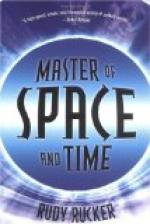About this time two professors at the University of Goettingen were experimenting with telegraphy. They established an experimental line between their laboratories, using at first a battery. Then Faraday discovered that an electric current could be generated in a wire by the motion of a magnet, thus laying the basis for the modern dynamo. Professors Gauss and Weber, who were operating the telegraph line at Goettingen, adapted this new discovery to their needs. They sent the message by moving a magnetic key. A current was thus generated in the line, and, passing over the wire and through a coil at the farther end, moved a magnet suspended there. The magnet moved to the right or left, depending on the direction of the current sent through the wire. A tiny mirror was mounted on the receiving magnet to magnify its movement and so render it more readily visible.
One Steinheil, of Munich, simplified it and added a call-bell. He also devised a recording telegraph in which the moving needle at the receiving station marked down its message in dots and dashes on a ribbon of paper. He was the first to utilize the earth for the return circuit, using a single wire for despatching the electric current used in signaling and allowing it to return through the ground.
In 1837, the same year in which Wheatstone and Morse were busy perfecting their telegraphs, as we shall see, Edward Davy exhibited a needle telegraph in London. Davy also realized that the discoveries of Arago could be used in improving the telegraph and making it practical. Arago discovered that the current passing through a coil of wire served to magnetize temporarily a piece of soft iron within it. It was this principle upon which Morse was working at this time. Davy did not carry his suggestions into effect, however. He emigrated to Australia, and the interruption in his experiments left the field open for those who were finally to bring the telegraph into usable form. Davy’s greatest contribution to telegraphy was the relay system by which very weak currents could call into play strong currents from a local battery, and so make the signals apparent at the receiving station.
IV
INVENTIONS OF SIR CHARLES WHEATSTONE
Wheatstone and His Enchanted
Lyre—Wheatstone and Cooke—First
Electric Telegraph Line Installed—The
Capture of the “Kwaker”—The
Automatic Transmitter.
Before we come to the story of Samuel F.B. Morse and the telegraph which actually proved a commercial success as the first practical carrier of intelligence which had been created for the service of man, we should pause to consider the achievements of Charles Wheatstone. Together with William Fothergill Cooke, another Englishman, he developed a telegraph line that, while it did not attain commercial success, was the first working telegraph placed at the service of the public.




